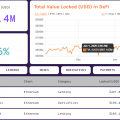Typically, developers update the software every week and make as many fixes as they want.But Bitcoin developers are conservative. The basic level of the network becomes stiff and loses flexibility, only those optional functions appear in it that do not break the consensus of the nodes.
</p>It seems to many newbies that Bitcoin is not changing.They are confused by the fact that altcoin developers are experimenting with different ideas and implementing touted features. Bitcoin is the software that the best specialists in the cryptocurrency industry work on. Why then don't they develop virtual reality games on blockchain with video storage in a tokenized cloud? Why is DeFi profitable farming appearing on other networks?
First of all, Bitcoin is hard money,digital gold. This network is decentralized enough to reject unwanted and unnecessary offers. Each node operator has a voice and can independently select software and optimization features while adhering to the basic rules of the network.
Refusing to use developer code is partgame theory. The ability to not accept changes and not let developers dominate maximizes decentralization. It's not profitable for developers to work on controversial software. All proposed necessary fixes are thoroughly reviewed by network participants.
Bitcoin soft forks and game theory
Soft forks are additional lines of code thatwhich developers add to the Bitcoin node for different purposes. Soft forks are non-contentious, meaning that their implementation does not break consensus and does not split the network, which happens as a result of poorly coordinated hard forks. We'll explore the conservatism of Bitcoin with two popular offerings: Taproot and SegWit.
Taproot update first suggested by developerBitcoin Core by Gregory Maxwell in January 2018. Taproot enhances multi-signature functionality and privacy of the main blockchain layer. Almost three years later, the code is almost complete and contains only 520 lines. Each line was checked on average for almost two days.
Even if the offer passes the initialbeing reviewed and approved, not all community members are required to run the code on their nodes. The developers are still trying to convince users, mining pools, exchanges and wallet creators to support this proposal. Full nodes will only start using additional code if their independent operators evaluate the benefits of objective and rigorously tested benefits.
SegWit technology that received an incredible amountvotes from developers, mining pools, and exchanges in 2017 is still halfway to adoption. Three years after individual nodes started to activate the soft fork, half of the network still doesn't use SegWit.
Bitcoin has no benevolent dictatorwhich would approve the development plan and current issues. The network relies on user distrust and constant checks. Some operators agree to run additional code on their nodes, while others refuse, while maintaining synchronization with the network.
The speed of development and adoption of new changes -not the priority of bitcoiners. Most users attribute their conservatism to the fact that they want to strengthen the basic level of Bitcoin, and the Lindy effects - the longer the technology lives, the longer it will still live and remain necessary. Additional functions cannot be introduced due to radical changes or unnecessary complication of the network. As the most seasoned blockchain experts say, complexity is the enemy of reliable and easily testable security tools.
What is the Difference Between Bitcoin and Altcoin Development
Amid the slow development of Bitcoin, brightthe philosophy of altcoiners stands out - "to move forward, breaking everything in its path." Networks are more concerned with features that can be advertised than with maximizing effectiveness. This is due to the centralized project management.
Ethereum is much easier to controlimplementing the roadmap and changing the main blockchain. It violated the principle of immutability - rollbacks were made, and the founders try to manage the network, that is, they interfere with the operation of the protocol, which contradicts the "code is law" policy.
Co-founder and benevolent web dictatorVitalik Buterin can accelerate the introduction of new features or change the priority of developments. The Ethereum Foundation decides how to allocate funds to projects. Ethereum is less decentralized in terms of full nodes, and also has difficulties with full archive nodes, which even Vitalik Buterin does not have. Even if users move to another network, there will be too little opposition and a lot of control.
The situation is complicated by other altcoins that are barelycan be called decentralized. But they are more likely to experiment with new features and worry less about the consequences. But when altcoins implement SegWit, Schnorr signatures or Taproot before Bitcoin, or at a time when bitcoiners are only discussing the integration process, then this cannot be called an innovative breakthrough. Likewise, it is shortsighted to copy the structure of Ethereum to capitalize on the DeFi mania.
Only the best networks have the most systematicreliable developments of its class. The rest of the projects copy them and change the parameters, which makes it convenient to test the code, but the risk of investing in failed projects increases.
Unsurprisingly, newbies easily believe that Bitcoin is the "dinosaur" of cryptocurrencies. They believe that Bitcoin leads the market only because of its popularity and pioneering status.
The same people say that theirs are faster andtheoretically, more decentralized networks will dethrone the king. Why is so much energy invested in developing DeFi applications, and Bitcoin has not been able to implement Taproot for several years? Why is SegWit and the Lightning Network growing so slowly? Why does Bitcoin not have thought leaders who will urge them to follow their plans and use Bitcoin the way the official version suggests?
Is Bitcoin afraid of change?
It's all about decentralization, no matter how illogicalthere was no sound in the world of benevolent dictators and their closed ecosystems. Over time, apps on top of Bitcoin and sidechains will see the same innovations that altcoins are adopting today. However, the basis for them will be a more reliable base layer with hard money. This basic level will ossify so much that developers will only occasionally make additional changes to it.
Despite its conservatism, Bitcoin is stillthe most popular and decentralized cryptocurrency. Bitcoin transactions are the safest and most likely to get confirmed. Bitcoin's motivation system has been around longer than any other blockchain. If anyone is concerned about the speed of adoption, then there are alternatives: second-tier applications, sidechains, and confidential altcoins. Everyone chooses according to their needs.
Competition is okay.It provides an impetus for increased convenience, improved functions and protocols, and strengthens the security of a decentralized system. It is useful to test the same code on systems for different purposes. If there is no function at the main level of Bitcoin that is absolutely necessary due to a politically unstable situation, then there is a market for altcoins created on top of and outside of Bitcoin. The key is decentralization and consensus-based change.
Improving privacy and scalabilitySchnorr and Taproot technologies are still waiting in line. They will strengthen Bitcoin and prepare it for mass adoption. Developers are researching and experimenting with Bitcoin, and recently there has been a new improvement to the Prism protocol based on a directed circular graph (DAG) that has the potential to increase network scalability.
Bitcoin is the most reliable cryptocurrency and the mosteffective means of accumulation. Criticism of Bitcoin must take into account the principles of game theory by which new code is added. Finally, remember the story of the hare and the turtle: the one who takes his time wins.
</p>



